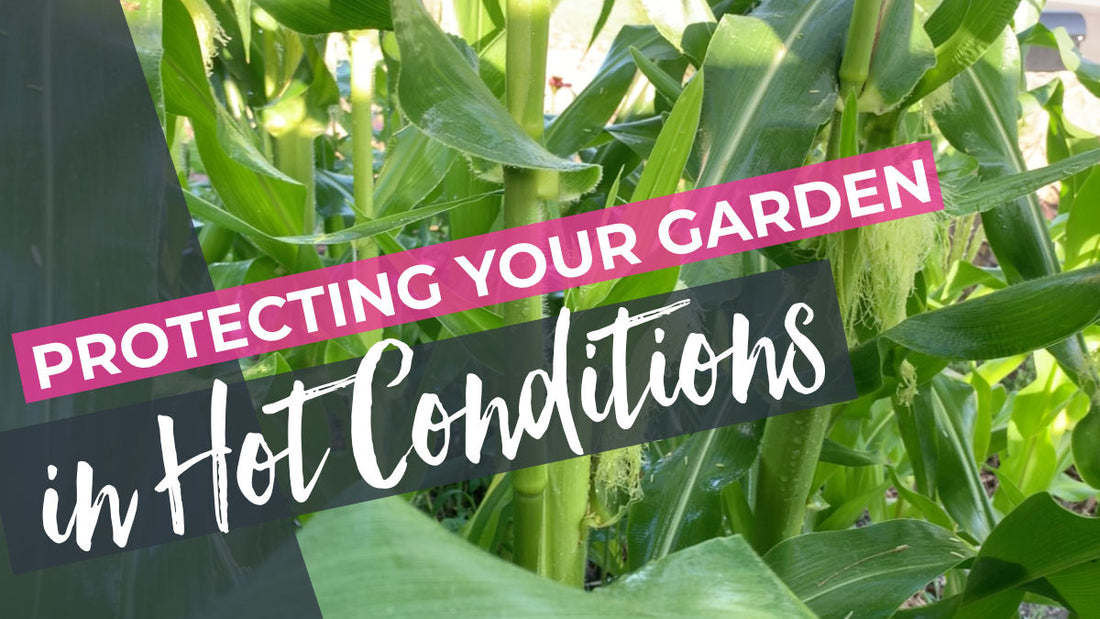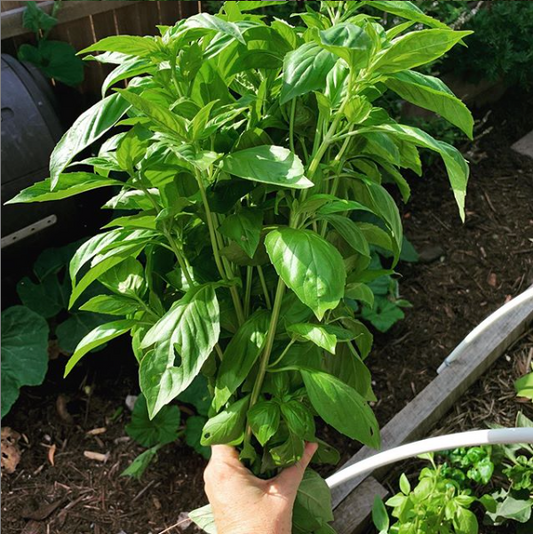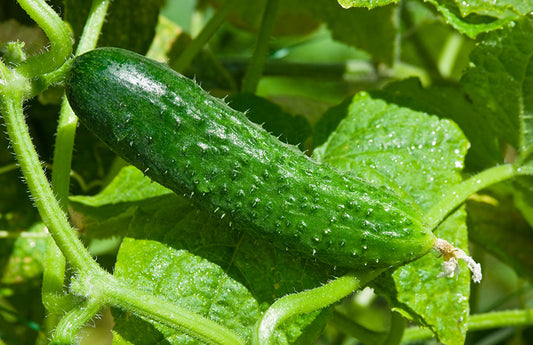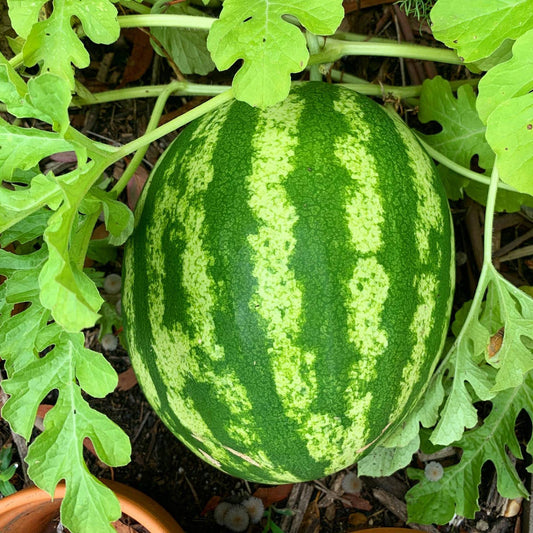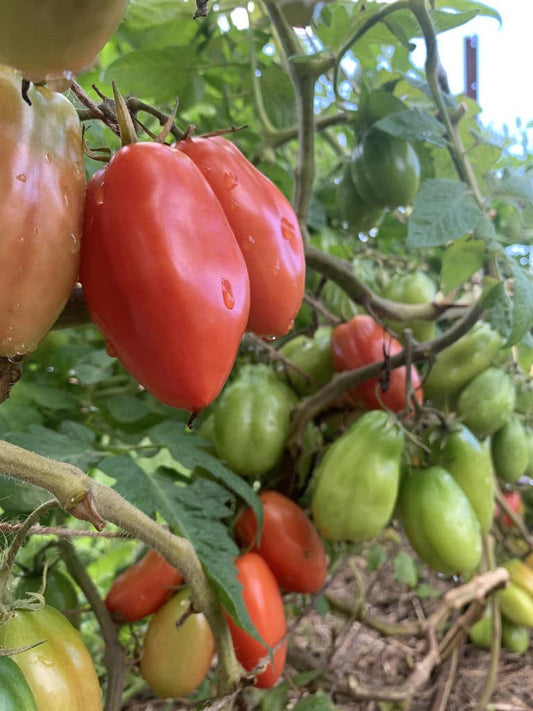The subtropics offer an enticing combination of warm weather and abundant sunshine, making it an ideal location for gardening all year round. However, growing a thriving vegetable garden in hot conditions can be a challenging task. The scorching sun, high temperatures, and relentless humidity can stress both you and your plants. To help you maintain a flourishing garden even in the harshest subtropical conditions, we've compiled some essential tips and strategies for protecting your vegetable garden from the heat.
Choose the Right Vegetables
The first step in ensuring a successful vegetable garden in hot subtropical weather is selecting the right plants. Some vegetables are better suited for these conditions than others. Opt for heat-tolerant varieties, such as tomatoes, beans, capsicums, chilli, okra, eggplant, and (our favourite) sweet potatoes. These vegetables have adapted to thrive in the high temperatures and intense sunlight of subtropical regions. Keep in mind that some things that thrive in temperate climates during summer are best grown during Autumn and Winter for us. Find a list of our favourites to grow during the hot months here.
Timing Matters
Planting at the right time can make all the difference in your garden's success. In the subtropics, it's essential to work with the seasons. Start your garden during the cooler months to give your vegetables a head start. Here in the subtropics we prefer to grow during autumn and winter garden to take advantage of milder temperatures. This timing reduces the stress on your plants during the scorching summer months.
Provide Adequate Shade
One of the most effective ways to protect your garden in hot conditions is to provide shade. Create shade structures using materials like shade cloth, bamboo, or trellises. Position these structures strategically to shield your plants from the harsh midday sun while still allowing enough light for healthy growth. Providing shade also helps reduce evaporation and conserves moisture.
Mulch Your Garden
Mulching is a simple yet powerful technique to protect your garden from extreme heat. Apply a layer of organic mulch, such as sugarcane mulch, wood chips, or compost, to the soil's surface. Mulch serves as a protective barrier, shielding the soil from the sun's direct rays and reducing soil temperature. It also helps retain moisture, which is crucial in hot conditions. Just be mindful that mulch can also restrict water penetrating to the soil so keep an eye on that.
Irrigation Is Key
Consistent and efficient irrigation is vital for your garden's well-being in subtropical heat. Water your plants in the early morning or late afternoon to prevent excessive evaporation. Drip irrigation or soaker hoses are excellent choices, as they deliver water directly to the roots, reducing wastage. Be mindful not to overwater, as this can lead to root rot in hot, humid conditions. We find that watering deeply and less often helps plants roots dig deeper and they become more resilient on those extremely hot days when the surface soil moisture evaporates quickly.
Implement a Watering Schedule
Create a watering schedule to ensure your garden gets the right amount of moisture. It's essential to adjust your watering routine based on the needs of different plants and the weather conditions. For example, tomatoes may need more water during fruiting, while established native plants can thrive with less frequent watering
Consider a Rainwater Harvesting System
Installing a rainwater harvesting system is a great way to ensure a consistent water supply for your garden. Collecting rainwater during the wet months and storing it for later use can help you mitigate the effects of water shortages during dry spells. It also reduces your reliance on town water, which may be subject to restrictions during hot and dry periods.
Companion Planting
Companion planting involves growing certain plants together to benefit each other. In hot conditions, consider companion planting to provide shade and improve pest control. For example, tall sunflowers or corn can offer shade to lower-growing vegetables.
Soil Health
Healthy soil is the foundation of a thriving garden. In subtropical climates, it's important to ensure your soil is well-draining and rich in organic matter. Incorporate compost and organic materials to improve soil structure and water retention. Healthy soil also supports robust plant growth and helps plants resist stress caused by heat and humidity.
Monitor for Pests and Diseases
Hot, humid conditions can create a perfect breeding ground for pests and diseases that can harm your vegetable garden. Regularly inspect your plants for signs of trouble, like yellowing leaves or insect damage. Employ natural pest control methods, such as eco oil or releasing beneficial insects, to keep harmful critters at bay. We find that always planting beneficial flowers to your garden helps keep things in balance.
Pruning and Thinning
Proper pruning and thinning of your plants can improve air circulation and reduce the risk of fungal diseases. Trim overcrowded branches and remove dead or diseased foliage. This practice can also redirect the plant's energy toward producing healthy, tasty vegetables.
Fertilise Mindfully
When growing vegetables in hot conditions, it's essential to be mindful of fertilisation. Excessive nitrogen can promote lush growth at the expense of fruit production. Use a balanced, slow-release fertiliser to provide the necessary nutrients without overstimulating vegetative growth. During the warmer months we opt for using regular Seaweed Saver to keep things growing along.
Gardening in the subtropics during the hot months may present unique challenges, but with the right strategies and care, your vegetable garden can flourish in hot conditions. Choosing the right vegetables, providing shade, proper irrigation, and good soil health are all essential components of your success. Remember to adapt your gardening techniques to the specific needs of your plants and the local weather conditions. By following these tips, you can protect your vegetable garden from the scorching sun and enjoy a bountiful harvest year-round in the subtropics. Happy gardening!
Got any tips and strategies for protecting your garden against the heat? Leave a comment below.

